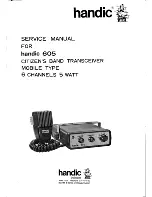
This Quick Start Guide is intended for experienced installing technicians. It is a basic reference to ensure all connections are properly made.
Installation and wiring of systems must be in accordance with the National Electrical Code, ANSI/NFPA 70.
1.0 Introduction
Long Range Transmitters and Receivers with an integrated receive
antenna comprise Farpointe Data’s high frequency, long-range
identification solution known as Ranger. Intended for security access
control applications, Ranger’s wireless communications are based
upon a secure, digital, anti-playback routine. The four-channel Ranger
Receiver (Channels A, B, C & D), model WRR-44, allows Ranger
Transmitter data to be sent over four separate Wiegand outputs.
Formatting of the Wiegand output is dependent upon the data
encoded on each individual Ranger Transmitter.
2.0 Receiver Layout
3.0 Cable Requirements
24 AWG minimum, multi-conductor stranded with an overall foil
shield, for example Belden 9540 or similar. Per the SIA’s Wiegand
specification, maximum cable length is 500 feet (152.4 m).
4.0 Output Formats
Wiegand (industry standard 26-bit Wiegand and custom
Wiegand formats).
5.0 Grounding
Shield (drain) continuity must run from the Receiver to the access
panel. Further, the shield and Receiver ground must be tied together
at the access panel, and must connect to an earth ground at one
point only.
6.0 Power
Power required is 12 VDC nominal at 120 mA. The Receiver may be
powered by the access panel. A linear power supply is recommended
for best operation.
7.0 Mounting
The Receiver may be mounted indoors or outdoors. The base of
the enclosure includes a drill template providing mounting provisions
to a wall box (standard North American and European), as well as pre-
drilled holes in the four corners allowing mounting to a flat surface.
Use supplied #6 mounting screws, or equivalent security screws,
for installation.
8.0 Read Range Adjustment
As shipped, the Receiver is set for the maximum read range, which is
nominally up to 200 feet (61 m). For optimal read range, it is important
that the Receiver be mounted as far from potential interference sources
as possible. These sources may include, but are not limited to, large
metal and concrete obstructions, as well as magnetic fields and radio
transmissions. Further range varies based on the height a Receiver is
installed, how a user may hold a Transmitter when being used, and
where the Transmitter is being used. Read range may vary for each
installation. Read range may be reduced by gently adjusting the
Receiver’s range pot in the counter-clockwise direction.
9.0 External LED Indicator
Refer to the information below for explanation on the Receiver’s
external LED indicator operation:
LED State
Description
Green
Initial power up
Amber
Normal powered on state
Flash Green
An activated Transmitter button press has
been received and processed
Flash Red
A non-activated Transmitter button press
has been detected
Off
Receiver is not powered on, or failed to
power up successfully
10.0 Antenna Switch
As shipped, the Receiver’s Antenna Switch is set in the INT (internal)
position. Read range can be extended using a separate, external
antenna attached to Receiver’s on-board 6.19 mm SMA jack
connector. If a separate, external antenna is used, then the switch
should be set in the EXT (external) position. For installations requiring
a separate, external antenna, please refer to the WRR-44 External
Antenna Reference Document.
11.0 Beeper Switch
As shipped, the Receiver’s Beeper Switch is set in the ON position.
If the installation technician prefers to disable the beeper and
External LED Indicator, then the Beeper Switch should be set in
the OFF position.
Legend:
a. Antenna Connector
b. Audio Beeper
c. 10-PIN Terminal Block
d. Read Range Adjustment
e. Antenna Switch
f. Beeper Switch
QUICK START GUIDE
WRR-44 RANGER
®
LONG-RANGE
433-MHz RECEIVER




















